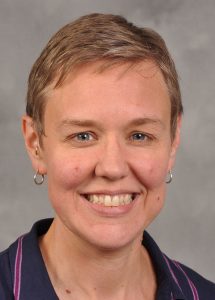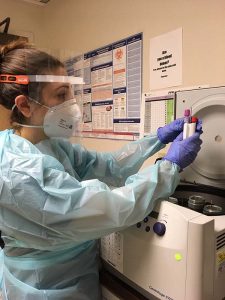They help researchers identify and refine better treatments
By Deborah Jeanne Sergeant
Every pill, vaccine and therapy prescribed to you by your medical provider once underwent a clinical trial to prove its safety and efficacy.
While it is reassuring that the process exists, most people know little about how it works.
“Clinical trials are the major way we’re able to distinguish whether a new product is effective,” said physician Elizabeth Asiago-Reddy, associate professor of infectious disease and medical director of Inclusive Health Services at SUNY Upstate Medical University.
“When doing a clinical trial, the important piece is we’re comparing placebo or standard of care with the new product. People are followed over time and there’s very, very careful procedures and observation as to what they’re receiving and how they’re doing over time. We look at how they progress towards the primary end point: the main question we’re trying to answer.”
Researchers must carefully select volunteers who fit a profile of the patients that the new drug or treatment would affect. Other factors of eligibility may include absence of certain conditions, age, gender and more.

Asiago-Reddy said that people lacking good access to healthcare are often those hardest to recruit for trials, such as those underinsured, those living in rural areas, older adults, minorities and people economically disadvantaged.
“We haven’t provided equal care to every kind of person who lives in our country,” she said. “That’s demonstrated in the data. I personally worry very much about excess incentives to recruit people from underrepresented communities.”
Trials are usually conducted in six steps: approval of the research protocol, screening, informed consent, data collection, study closure and reporting of findings.
An institutional review board reviews every trial conducted in the US. The board is comprised of experts who look at the risks and benefits of the study to protect those participating. Volunteers are screened for their eligibility.
As to whether a participant “makes the cut” to join, “it all depends upon the phase of study that you’re involved in,” said physician Stephen Thomas, director of global health with SUNY Upstate.
Early in studies, researchers tend to want young, healthy adults. As the trial progresses and expands, it tends to include people with a variety of ages and health issues, as long as those issues are not contraindicated for the parameters of the study.
The informed consent ensures that the participants understand the study. As the study ensues, researchers carefully monitor patients. In some cases, they remain at a healthcare facility. In most cases, they participate in a number of visits to the facility so researchers can gather information. Once all the visits have been completed, the trial is over.
Participants typically receive a stipend for their time spent.
Trials typically research in phases. The earliest phase is in a lab Petri dish and then with animals. The first human trials use only a small group and focus on safety. As the phases continue, more individuals are added to the group and some receive the treatment and others (the control group) do not. This allows researchers to fairly compare the efficacy of what they are testing. As the phases continue, larger groups become involved, which can help prove efficacy among a variety of people.
Some groups are difficult to study for ethical reasons.

“Historically, pregnant women, children and people who are immunosuppressed are excluded from clinical trials,” Thomas said. “I went to college in the late ‘80s as a medical ethics major. People look at doing experiments in those populations view them as high risk so they avoid it. Sure, you spare them the risk of participating, but you have a medication you do not know if it’s safe in that group or will benefit that group. That group has been left out and has no idea what they can use.”
Older adults are also challenging to study because they may have a long list of medications and health issues that could skew the results if their group size is too small. But it is also important to accurately represent their demographic which statistically does have more health issues than younger people.
People considering participation in a clinical trail can feel confident that they are not “guinea pigs.”
“The US has one of the most rigorous clinical processes in the world,” said Lisa Sonneborn, founder and site director of Clarity Clinical Research in East Syracuse. “It takes often 15 years to gather data before the FDA will approve it. There are many checkpoints along to way to review data to ensure the data is valid and supports moving forward with the evaluation of that treatment. Safety data is gathered at all steps. As you go forward, we understand the effects on the disease.”
Volunteers are not haphazardly added to clinical trials. In fact, the opposite is true.
“We spend a lot of time with patients understanding their history and health and triage them into studies they would benefit from,” she said. “People are concerned that participants will be administered a treatment with understanding the risk. Informed consent can take hours of time so patients have all the information they need prior to participating. Sometimes, that even means taking that information and discussing it with their primary care provider, which is encouraged.”
She views participating in clinical trials as a means to leave a legacy in healthcare.
“There are so many people who came before you to help develop the drugs that help you,” she said. “You have an opportunity to help your children and grandchildren. You just have to call and ask what opportunities there are for you in research. You may not fit the profile for a study but calling is the first step. It moves science forward and makes cures available. It can save lives.”
Look for clinical trials at www.clinicaltrials.gov.




